Sprouting Buckwheat
I’ve been on a kind of buckwheat kick for a couple of years now. I like to use buckwheat flour in some of the gluten-free sourdough loaves I created for Cultures for Health. We’ve eaten it in various breakfast recipes including this baked porridge.
So, recently, I sprouted some buckwheat to throw into raw breakfasts with kefir and fruit or to top salads with. Sprouting used to intimidate me but much like sourdough, fermentation, and other traditional food practices; once you try it it really is simple. I’ve been doing it for about six years now because I find it makes things more digestible as it does away with things like enzyme inhibitors.
I’ve shared before how I sprout various grains, seeds, and legumes so I’ll spare you the full tutorial. As with most things, I don’t normally usually do it the same way twice. Sprouting has a couple of basic principles – soak, rinse, repeat – that can be modified to meet your kitchen schedule and still give excellent results.
So I just throw one pound of the raw buckwheat groats into a 1/2 gallon jar and cover them with water until the jar is filled to about the six cup mark. I now let it sit overnight or for about 12 hours.
At this point the groats have swollen up and the liquid surrounding them is quite slimy as it has taken on some of the starches and other elements of the grain. You’ll want to rinse the buckwheat groats at this point. I like to pour them into a sieve and then rinse them until the water runs clear and the sliminess has gone down.
I now put them back in the jar and let them sit with a cloth covering the opening so they get some air. This goes on for about 3-6 hours or until I remember to pour some more water on the little guys. Then I’ll leave them in water for another 3-6 hours, rinse, and repeat. None of this is set in stone but you do want to be checking on them at various stages of rinsing, airing, and soaking to make sure they aren’t either drying out or fermenting (not that I really worry about that kind of thing).
After 2-3 days of this cycle, they generally start presenting tiny little tails. Once the tails just begin to emerge I give them about 12 more hours in the sprouting cycle before drying them.
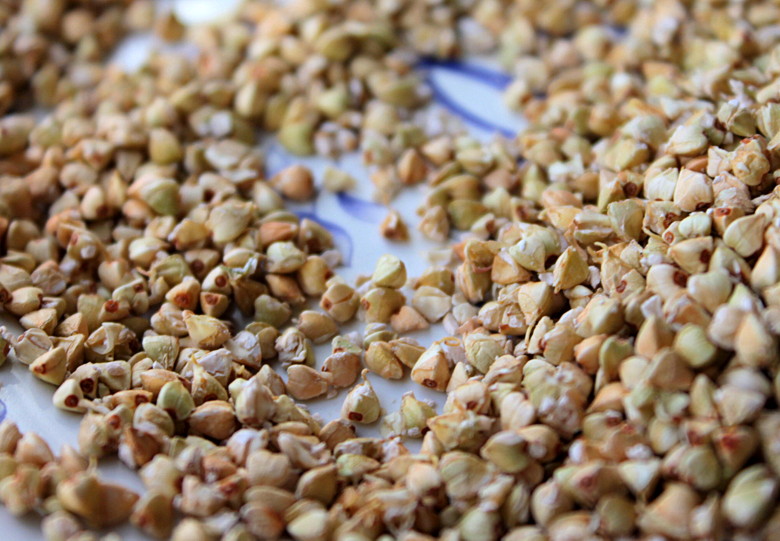 You can eat them at this sprouted stage while still wet. A sprouted buckwheat porridge is a good use for them as is sprinkling them into a salad. I also like to dehydrate them to use in homemade seed cereal or energy-type bars.
You can eat them at this sprouted stage while still wet. A sprouted buckwheat porridge is a good use for them as is sprinkling them into a salad. I also like to dehydrate them to use in homemade seed cereal or energy-type bars.
In our dry climate I simply spread them out on a couple of sheet pans or plates and cover them with a thin towel. They’ll be dry in 12-24 hours and can then be stored in an airtight container for several weeks. Ours don’t usually last that long.
One certain little man found a bag of my raw buckwheat groats and decided to claim them as his own and do his own sprouting experiment. Homegrown buckwheat from “the buckwheat patch”? Why not.

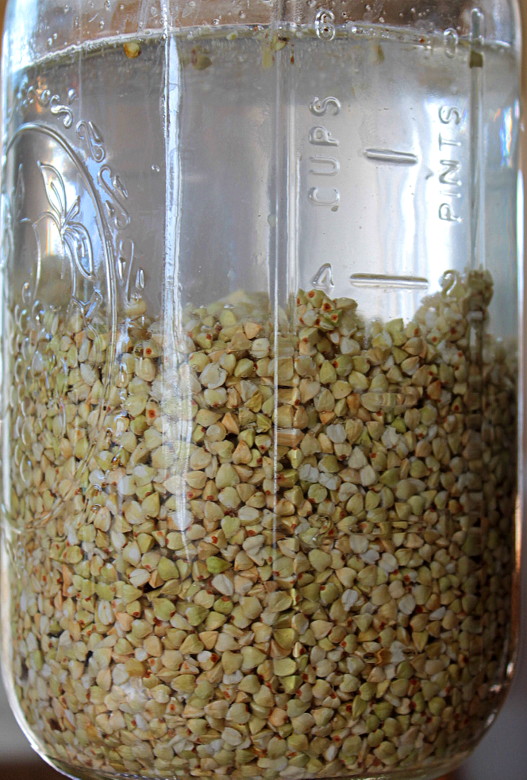
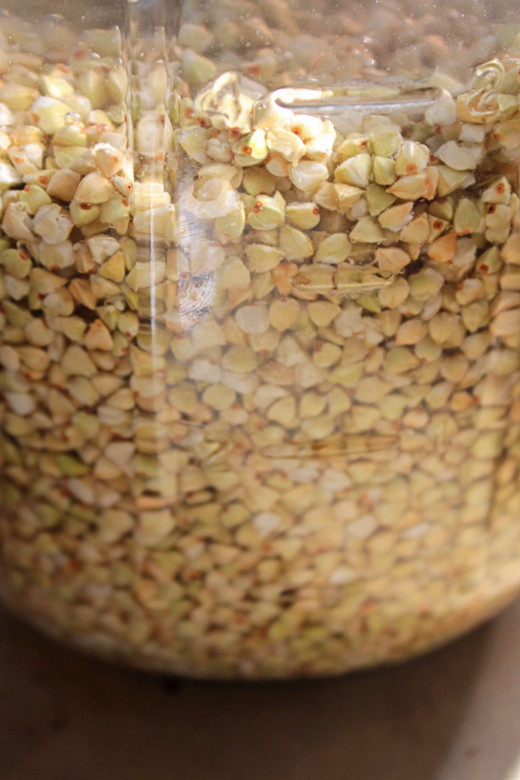
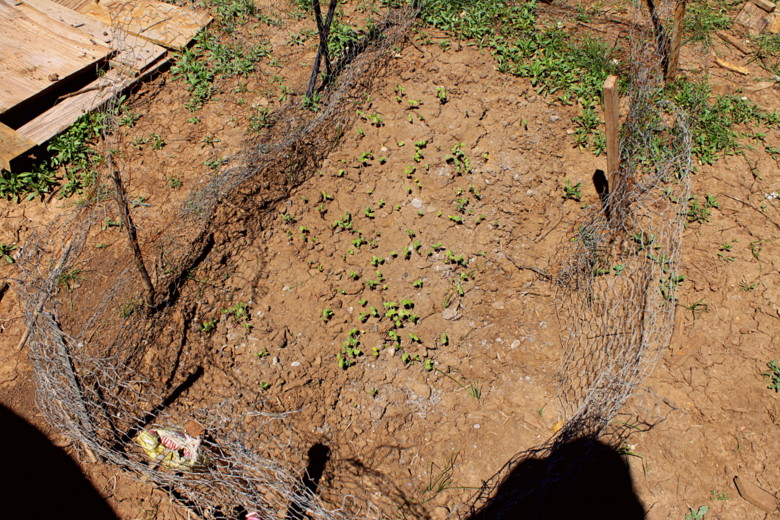

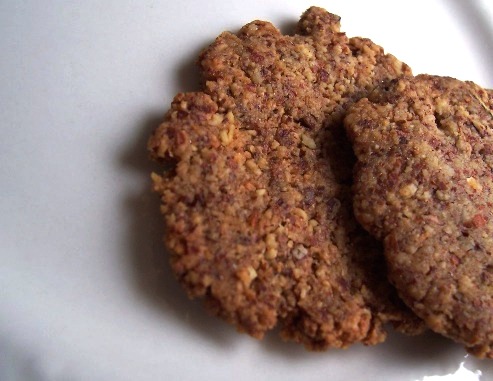
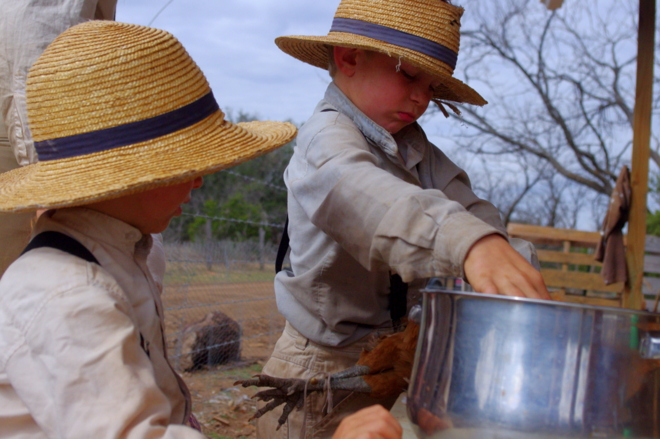

oh i am so glad you printed this. I have been trying to transition to soaked overnight oatmeal breakfasts this winter and am not branching out to other grains and seeds. Just this morning I found a recipe that included sprouted buckwheat (which ironically I had received last week as a free gift from my Nuts.com order). I didn’t know how to sprout buckwheat, but somewhere in the recesses of my mind I remembered it was different from typical seeds for salads. So you can imagine the little thank you God dance just danced reading your email! I love how God arranges things for us in the right timing. So I am off to soak my buckwheat for cereal in a few days!
blessings jackie
ps…Oh and I LOVE your blog! Great info and a great encouragement and source of inspiration!
Have you all heard of these? My Papa had a ‘healthy’ farm and followed many Old Testament practices in selecting and saving seeds. I can attest that all of us were much healthier than we are now! I’ve been struggling for decades until several nutritionists started helping me these past couple of years. I’ve lost tremendous weight and been able to stop many poisonous medications with ONLY diet changes and being VERY picky about where my food comes from!
http://heirloomseeds.com/
{…”Why Grow Heirloom Seeds
If hybrid and GMO seeds grow plants with useful traits, why should you grow heirloom plants instead? First, heirlooms are generally known to produce better taste and flavor. Heirloom fruits and vegetables are also known to be more nutritious. Last but not least, they are less expensive over the long haul. Heirloom plants may require a bit more care than their counterparts but the effort you put in will be worth it! Don’t forget that you would also be playing an important part in preserving the genetic diversity of plants by growing heirloom seeds. After all, how can hybrid seeds be produced without the existence of the original seeds?…” http://ecowatch.com/2015/03/25/grow-heirloom-seeds/%5D